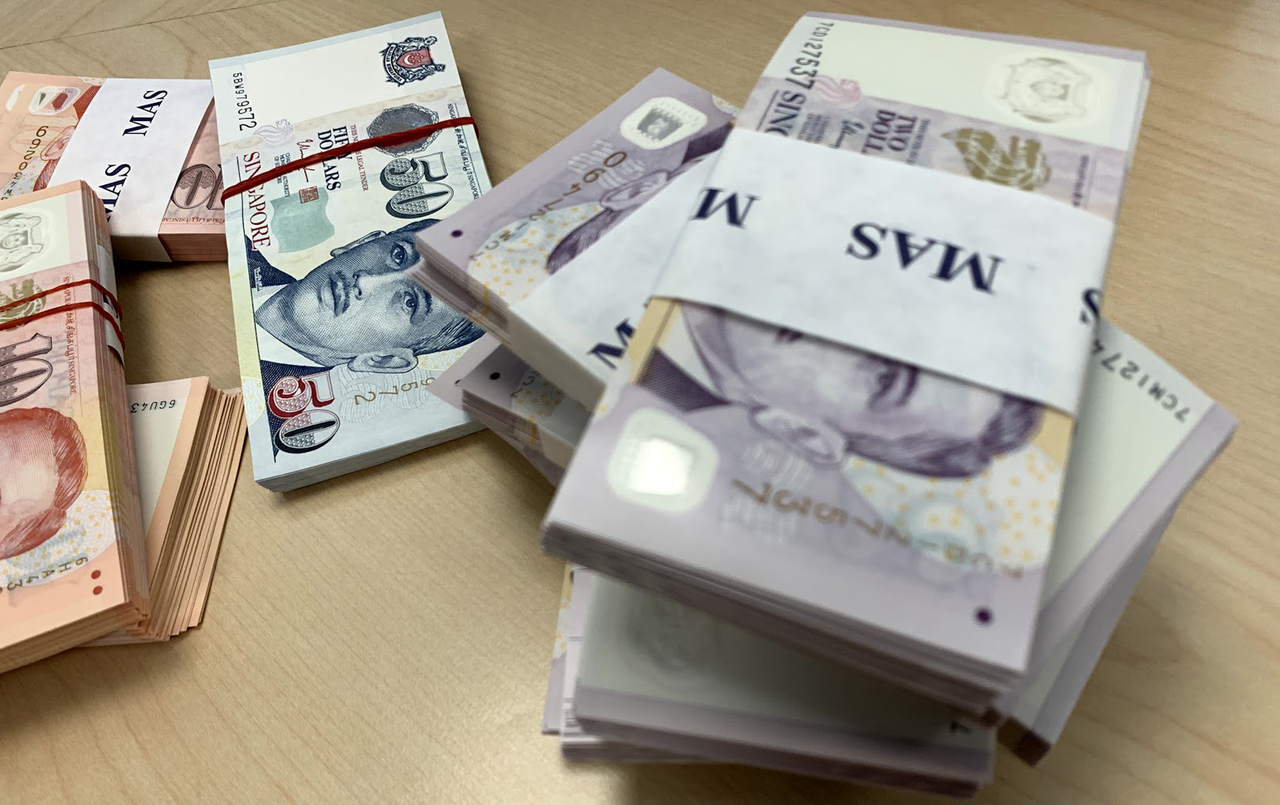Singapore tightening puts its currency on track to lead gains
Sign up now: Get ST's newsletters delivered to your inbox

The Singapore dollar has climbed about 1.5 per cent since sliding to the lowest in over a year in November.
PHOTO: ST FILE
Follow topic:
SINGAPORE (BLOOMBERG) - The search is on for South-east Asia's top-performing currency for the year and the odds are tilting in favour of the Singapore dollar.
It is early days yet but the Republic's currency looks like a strong contender for the crown after the Monetary Authority of Singapore's (MAS) hawkish shift last week.
Quickening inflation and growth are fueling bets for further tightening, boosting the Singapore dollar's prospects. The country's success in tackling the pandemic may also add to the Singapore dollar's haven appeal.
Regional currencies are vying for inflows at a time when investors are turning more selective amid growing signs that the United States Federal Reserve will tighten at a faster pace.
The Singapore dollar has climbed about 1.5 per cent since sliding to the lowest in over a year in November. The gains could quicken if the MAS, which uses foreign exchange as a tool to stabilise prices, tightens again at a scheduled meeting in April.
The Singapore Government said it was reviewing its forecast ranges for inflation after consumer-price gains accelerated to an eight-year high in December. A strong retail sales print on Feb 4 could add to signs that growth is quickening.
Another contender for the title of South-east Asia's top currency is the Thai baht, according to Australia and New Zealand Banking Group strategist Irene Cheung. The currency may get a boost from the resumption of a quarantine-free visa programme for vaccinated visitors next month although the Bank of Thailand's dovish stance is likely to counter the gains.
The Indonesian rupiah, which was the region's most resilient currency last year, is also in the running given the central bank's pledge to normalise policy as its US counterpart hikes. But the currency is vulnerable to outflows if sentiment shifts, as witnessed in the first quarter of 2020.
"We like the rupiah to outperform its regional peers this year given the nation is a commodity exporter, with strong external balance, ample real rates support and a central bank which has prudent monetary policy," said Mr Divya Devesh, head of Asean and South Asia FX research at Standard Chartered Bank.
In 2021, the rupiah dropped 1.4 per cent against the greenback, while the Singapore dollar declined 2 per cent. The region's worst performer was the Thai baht, which tanked about 10 per cent.
The Malaysian ringgit's claim to the top spot is more tenuous as much depends on when the central bank will start to raise interest rates. Political uncertainties also cloud the outlook, given speculation that a general election may take place this year.
The remaining main currency, the Philippine peso, has its work cut out. Bangko Sentral ng Pilipinas has given its implicit nod for a weaker exchange rate and the nation's trade deficit is widening as growth recovers. A presidential election is also on the horizon, which could put traders on guard.

